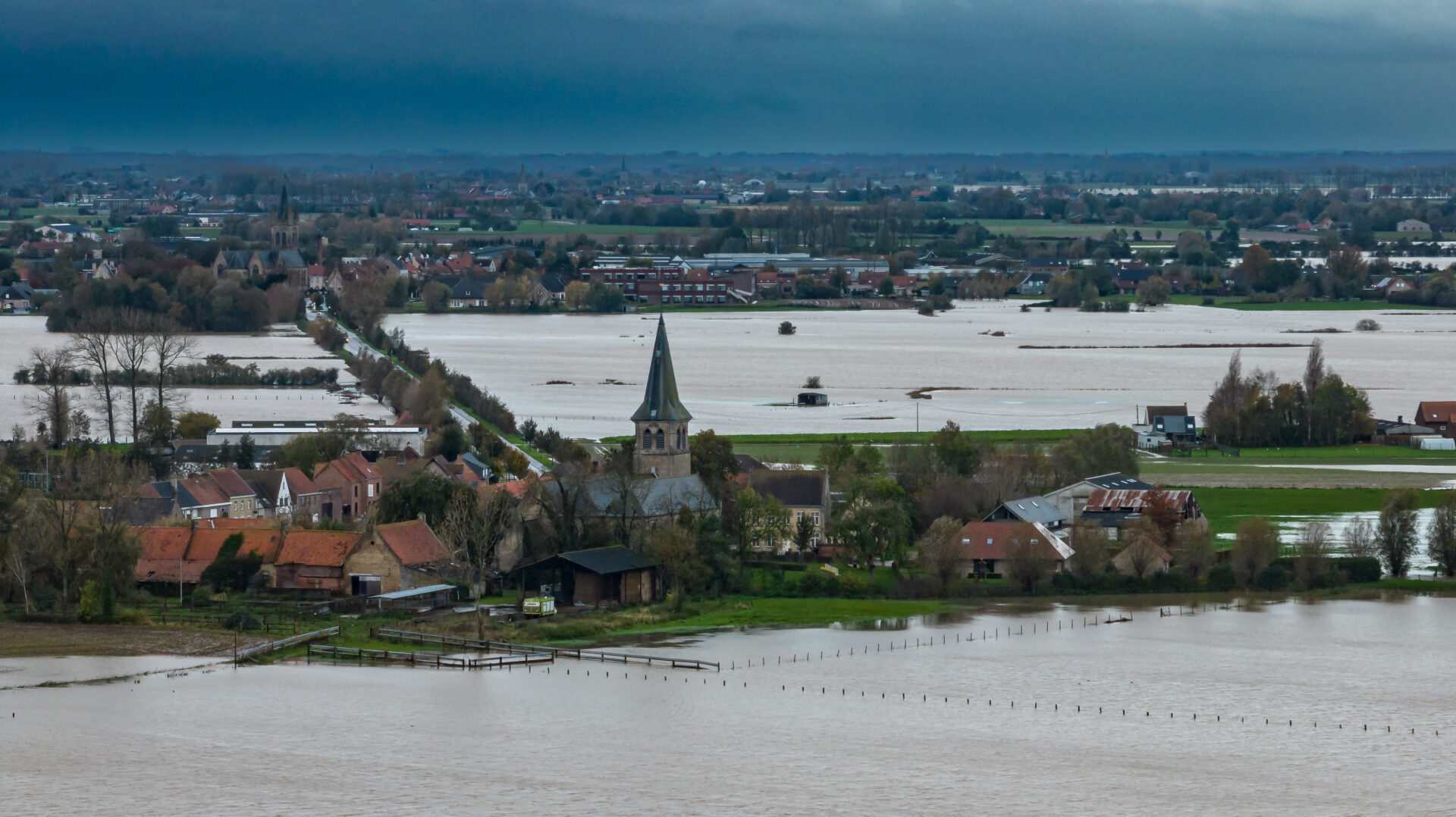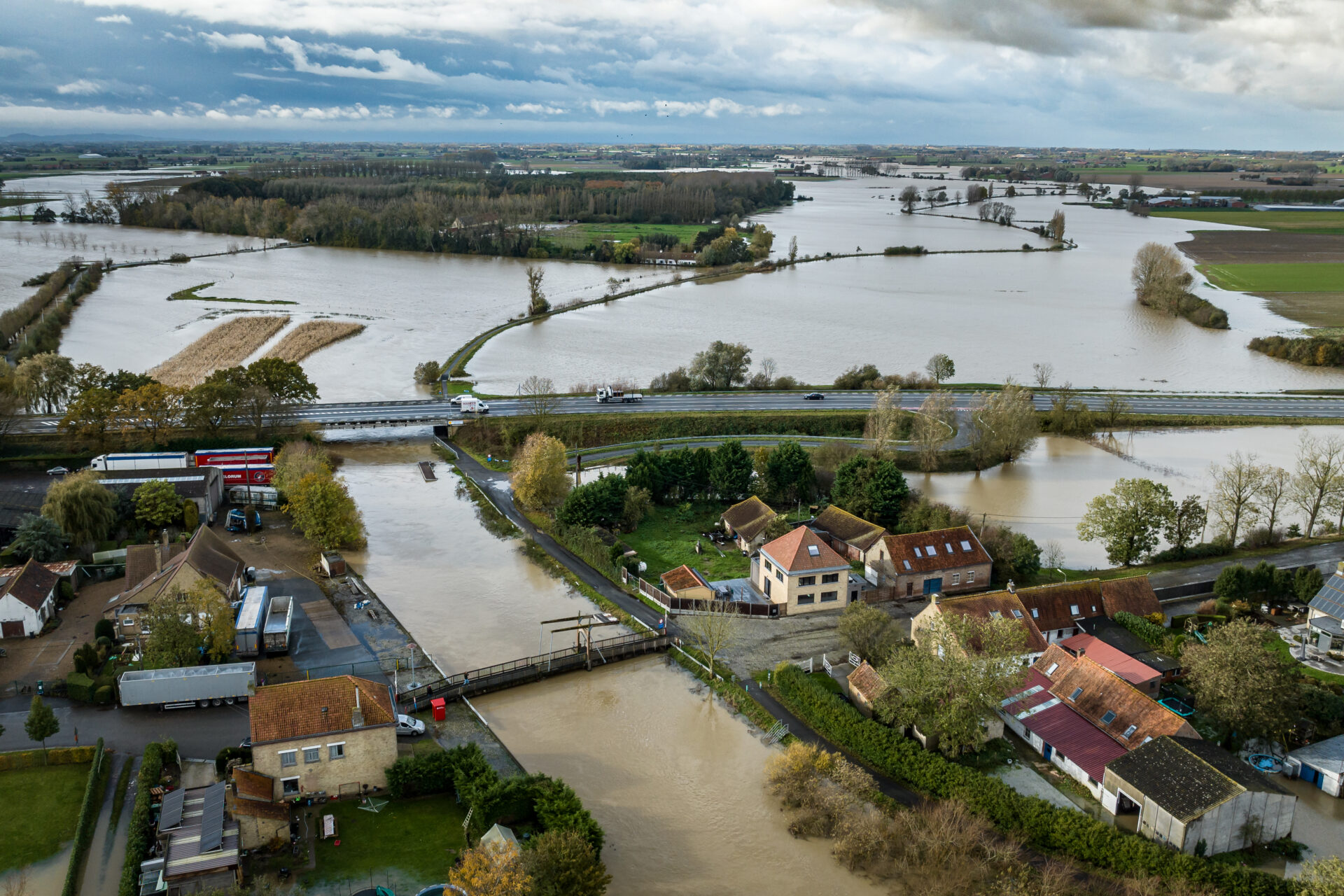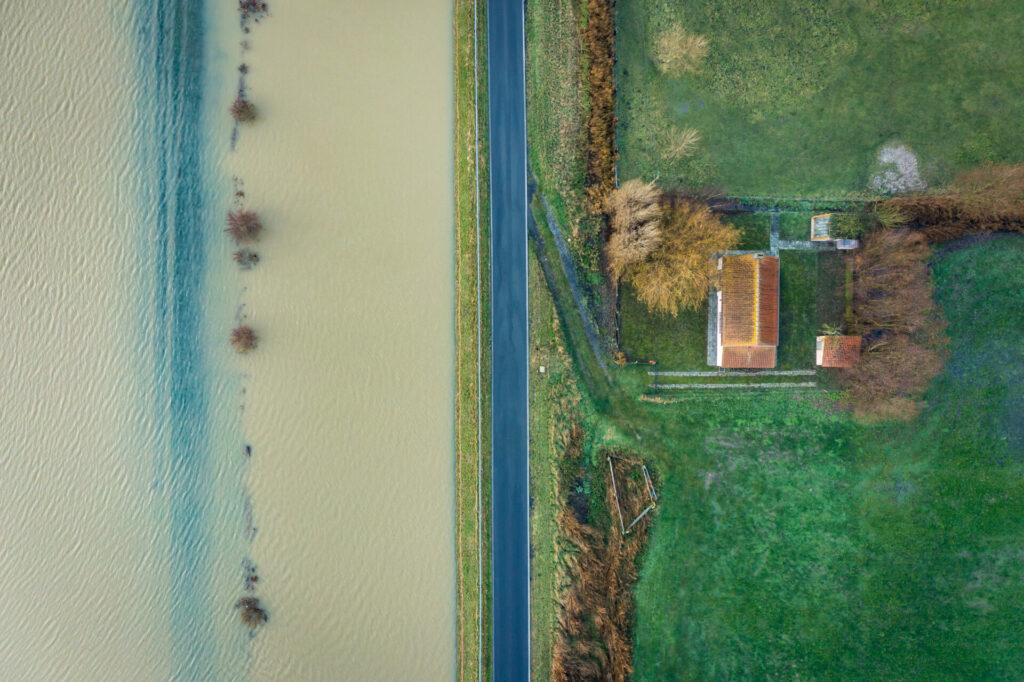Following the ongoing flooding, some 20 people are being evacuated in Noordschote and Reninge in West Flanders, was decided by the crisis cell of the province of West Flanders.
Some twenty-five homes in Woumen (Diksmuide) and Merkem (Houthulst) were also due to be evacuated on Wednesday, but not all residents responded.
"West and East Flanders are still plagued by flooding. I am in permanent contact with the emergency services and the mayors involved. We will keep making efforts to help the victims," said the Belgian Interior Minister, Annelies Verlinden on social media.
In the province of West Flanders, especially along the French border, heavy rain continued on Thursday. For now, however, the weather forecasts are more favourable than expected, as most of the rain will fall in France.
On the other hand, a new rain zone would already follow on Saturday, while forecasts suggest it will not be dry next week either. The drier interlude does allow water levels to stabilise somewhat, although they remain historically high.

Aerial drone picture shows flooding in Noordschote, after days of heavy rain in the West Flanders province, 10 November 2023. Credit: Belga / Kurt Desplenter
That said, the situation is still precarious. There is water in the streets of the Poesel neighbourhood in Noordschote. In these circumstances, it was decided to evacuate some 20 homes preventively in Noordschote and Reninge, areas of Lo-Reninge.
Some residents of Merkem (Houthulst) are also being asked as a preventive measure to be ready in view of a possible evacuation. A number of neighbourhoods in Diksmuide are advised not to park their cars in their underground garages.
Due to the very high water level at the Winterdijk, it was already decided on Wednesday to preventively evacuate the residents and livestock of 15 homes in Woumen (Diksmuide) and of 10 homes in Merkem (Houthulst). Not everyone responded effectively either.
"On the ground, it appears that so far residents are rather hesitant to leave their homes and farms. The crisis cell points out that this can be done in safe conditions now. In the next phase, this will become much more difficult," the authorities said.

Aerial drone picture shows flooding in Vleteren, 10 November 2023. Credit: Belga / Kurt Desplenter
No flood barriers have yet been breached in the Winterdijk in question. Locally, water was already passing over the dike, but the dike itself is currently holding up. Additional rain could certainly exacerbate the problem at the Blankaart. A team of surface water rescuers from the Antwerp Fire Brigade is on standby to rescue people in case of water entrapment.
The lowest zones at the Fintele lock (Lo-Reninge) and the IJzerdijk in Heernisse (Diksmuide) also remain critical points in the Westhoek. Dykes will therefore be raised at those locations, just near the Tervaete Bridge (Diksmuide) and at the Union Bridge on the border of Mannekensvere (Middelkerke) and Nieuwpoort.
High water levels must also be closely monitored in other places in West Flanders. There is flooding in Ledegem after the Heulebeek burst its banks. A dike is being built to protect the Hemelhoek neighbourhood. In Moorsele (Wevelgem), the Groen Lint neighbourhood is also under pressure. Finally, water levels also remain high in the Ypres area.

This aerial drone image shows the site of flooding in Lo-Reninge, after days of heavy rain in the West Flanders province. Credit: Belga / Kurt Desplenter
Meanwhile, water managers are also carefully monitoring the effects of heavy pumping. That way, they want to prevent the accelerated discharge of water from causing bank subsidence. Today, Nieuwpoort is discharging as much as 50% more water into the sea than the historical maximum of the past 30 years. In that context and for safety reasons, there will be a shipping ban on several waterways. Consequently, kayaking on the Yser is expressly prohibited.
Water levels are expected to rise again especially on Friday, but would not reach the peaks of recent days. Governor Carl Decaluwé realises that the flooding is beginning to weigh heavily on the population and emergency services. "Only by working together can we get through this," he said.
Emergency services would like to thank the population for the frequent assistance offered and the many expressions of support. To people who want to help, we ask them to especially offer help to neighbours," it sounds.

